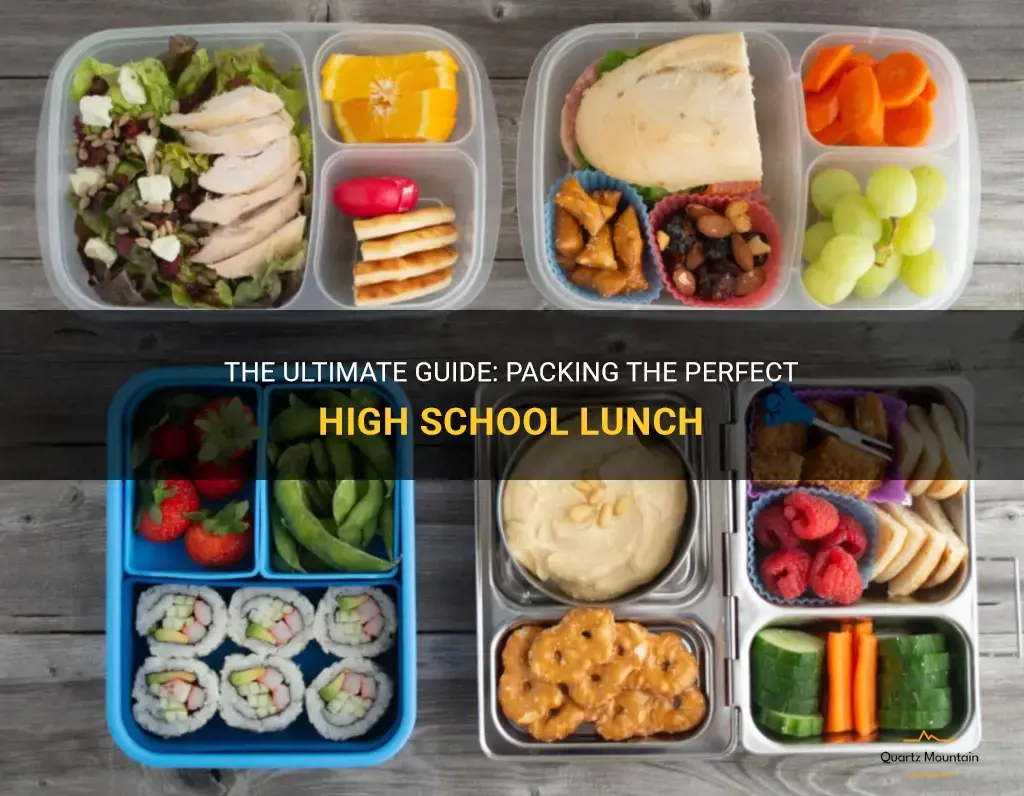
Are you tired of eating the same boring lunch at school every day? Do you want to pack a lunch that is not only delicious, but also healthy and satisfying? Look no further! This ultimate guide is here to help you pack the perfect high school lunch. With a variety of options and tips, you will never have a dull lunch period again. Say goodbye to soggy sandwiches and lackluster salads, and say hello to a lunch that will make your classmates jealous. Get ready to become the envy of the cafeteria with our ultimate guide to packing the perfect high school lunch.
What You'll Learn
- What are some healthy and easy-to-pack lunch options for high school students?
- How can I ensure that my packed lunch stays fresh and appetizing until lunchtime?
- Are there any specific food items that I should avoid packing for school lunch in high school?
- What are some budget-friendly ideas for packing school lunches?
- Do you have any tips or tricks for creating variety in packed school lunches to prevent boredom?

What are some healthy and easy-to-pack lunch options for high school students?
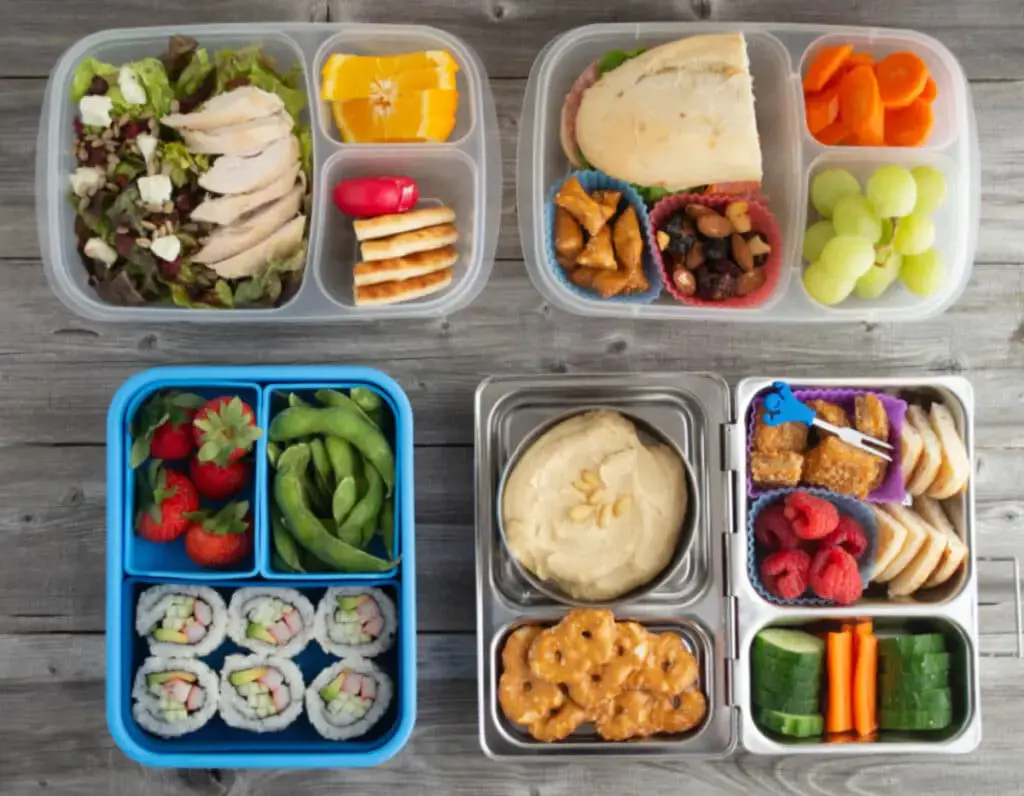
As a high school student, it is important to fuel your body with nutritious and balanced meals in order to perform at your best both academically and physically. Packing a healthy lunch can often seem challenging, but with some planning and creativity, you can bring delicious and nutritious options to school. Here are a few healthy and easy-to-pack lunch ideas for high school students:
- Sandwiches with Whole Grain Bread: Making sandwiches with whole grain bread ensures that you are getting the fiber and nutrients needed for sustained energy throughout the day. You can fill your sandwich with lean proteins such as turkey or chicken, and add vegetables like lettuce, tomatoes, and cucumbers to increase the nutrient content.
- Wraps: Wraps are a versatile and portable lunch option. You can use whole grain tortillas and fill them with a variety of ingredients such as grilled chicken, hummus, spinach, and bell peppers. Wraps can be easily customized to your taste preferences and can be made ahead of time.
- Salad Jars: Preparing salads in jars is a convenient way to pack a healthy lunch. Start by layering your favorite leafy greens at the bottom of the jar. Then add vegetables such as cucumbers, cherry tomatoes, and carrots. Top it off with some lean protein like grilled chicken or chickpeas. Keep the dressing separate and add it to the salad just before eating to prevent sogginess.
- Bento Boxes: Bento boxes are a popular lunch option in Japanese cuisine and are gaining popularity worldwide due to their convenience and variety of options. These compartmentalized boxes allow you to pack a balanced meal with a variety of foods such as sliced fruits, vegetables, almonds, cheese, and whole grain crackers. Bento boxes provide the opportunity to pack small portions of different foods, making it a fun and interactive lunch option.
- Yogurt Parfait: Yogurt parfaits are not only delicious but also provide a good source of protein, calcium, and probiotics. You can layer Greek yogurt, fruits such as berries or mangoes, and granola in a portable container. Consider choosing a yogurt without added sugars or opt for plain yogurt and add a drizzle of honey for sweetness.
- Homemade Energy Bars or Balls: High school students often need a quick and nutritious snack to keep them energized throughout the day. Homemade energy bars or balls can be made ahead of time and packed in small containers. They can be made with ingredients like oats, nuts, seeds, and dried fruits, providing a good balance of carbohydrates, healthy fats, and protein.
Remember, it's important to stay hydrated throughout the day as well, so pack a refillable water bottle to keep yourself hydrated and avoid sugary drinks. Planning and preparing your lunch ahead of time can help you make healthier choices and ensure that you have a variety of nutritious options throughout the week. Experiment with different ingredients and flavors to keep your lunch exciting and enjoyable. By prioritizing your health and well-being with nutritious and easy-to-pack lunches, you are setting yourself up for success in school and beyond.
Essential Items to Pack for Boston in October
You may want to see also

How can I ensure that my packed lunch stays fresh and appetizing until lunchtime?

Packed lunches are a convenient and cost-effective option for many people who want to have a home-cooked meal while on the go. However, it can be quite disappointing to open your lunchbox at midday and find that your food has become stale, unappetizing, or even spoiled. To avoid this unfortunate situation, there are several steps you can take to ensure that your packed lunch stays fresh and appetizing until lunchtime.
- Choose the right ingredients: When preparing a packed lunch, it's crucial to select ingredients that are less likely to spoil quickly. Opt for fresh fruits and vegetables, which can be stored at room temperature without losing their quality. When it comes to proteins, consider canned tuna or chicken, which have a long shelf life and don't require refrigeration until opened. Additionally, incorporate dry or stable foods like nuts, whole grains, or crackers, as they are less prone to spoiling.
- Use proper storage containers: Airtight containers are essential for maintaining the freshness of your packed lunch. Invest in high-quality containers that have a secure seal to prevent any leakage or exposure to air. Glass containers are ideal because they are non-toxic and don't retain odors or stains like some plastic containers. Dividing your food into separate compartments using bento-style containers can also help to maintain the integrity of different components of your lunch.
- Keep your lunch cool: If your packed lunch contains perishable items such as dairy products, meats, or salads, it is crucial to keep them cool to prevent bacteria growth and spoilage. Use insulated lunch bags or coolers along with ice packs to maintain a low temperature. Alternatively, you can freeze a bottle of water or juice the night before and place it in your lunch bag to act as an ice pack. This way, it will slowly thaw, providing a cool environment for your lunch.
- Store foods correctly: Certain foods are more susceptible to spoiling than others, so it's essential to store them correctly to maintain freshness. Keep foods like sandwiches, wraps, or salads in the refrigerator until you are ready to leave the house. Avoid exposing your lunch to direct sunlight or other sources of heat as this can contribute to spoilage. Additionally, pack any condiments or dressings separately and only add them to your meal just before eating to prevent sogginess.
- Consider the order of packing: To further ensure the freshness of your packed lunch, pay attention to the order in which you pack your ingredients. Start by placing the heaviest and sturdiest items at the bottom of your container or lunch bag, followed by more delicate items on top. This way, your food is less likely to get crushed, and ingredients like lettuce or tomatoes won't be in direct contact with anything moist or oily that could make them soggy.
By following these steps, you can significantly increase the chances of enjoying a fresh and appetizing packed lunch. Experiment with different ingredients and combinations to find options that suit your preferences and dietary requirements. With a little planning and proper storage, you can consistently enjoy a delicious meal on the go without the fear of unwanted spoilage.
The Essential Items to Pack for Fire Evacuation: A Comprehensive Guide
You may want to see also

Are there any specific food items that I should avoid packing for school lunch in high school?
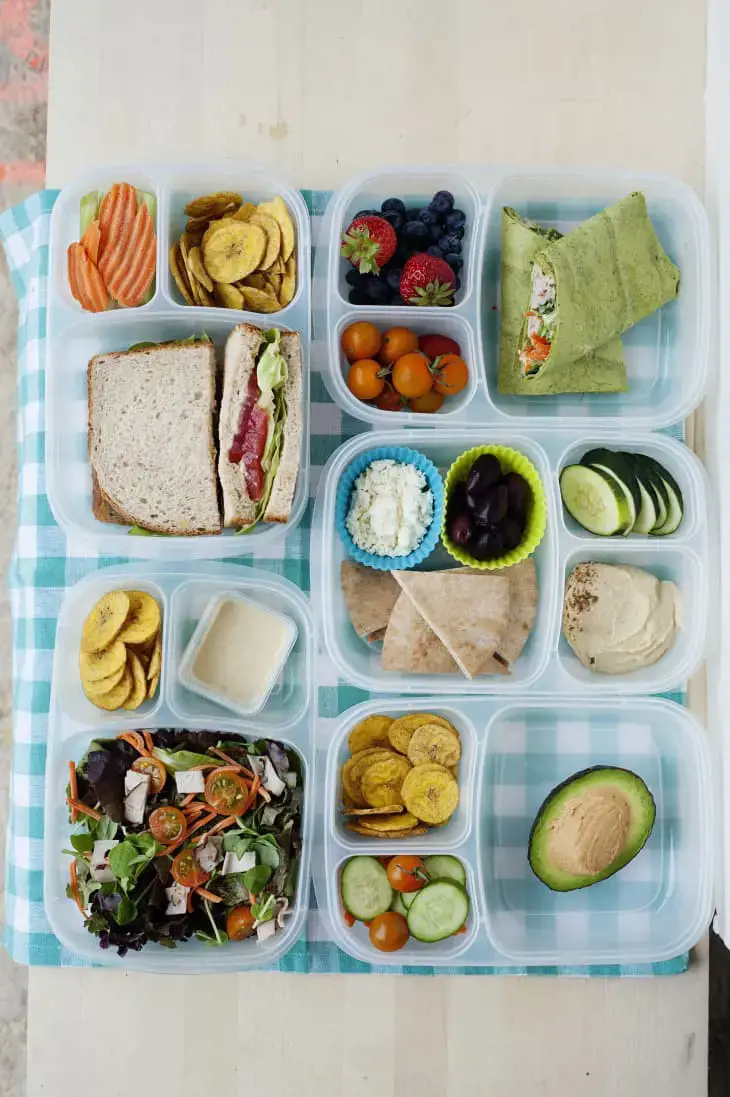
When it comes to packing school lunches for high school students, it's important to provide them with healthy and balanced meals that will fuel their bodies and minds throughout the day. However, there are certain food items that are best avoided for a variety of reasons. Let's take a look at a few of them.
- Sugary drinks: One of the main culprits to avoid packing in school lunches is sugary drinks such as soda, fruit juices, and energy drinks. These beverages are high in added sugars, which can lead to weight gain, tooth decay, and energy crashes. Instead, opt for water, flavored water, or unsweetened tea to help keep your teenager hydrated throughout the day.
- Processed snacks: Many processed snacks, such as chips, cookies, and candy bars, are high in unhealthy fats, sugars, and sodium. These snacks provide little nutritional value and can leave your teenager feeling hungry and unsatisfied. Instead, pack healthier alternatives such as fresh fruits, vegetables, nuts, and whole grain crackers. These options provide essential nutrients, fiber, and can help keep your teenager energized and focused.
- Fast food or takeout: While it may be tempting to grab a quick fast food meal or order takeout for your teenager's lunch, it's best to avoid this option. Fast food meals are typically high in saturated fats, sodium, and calories, and lack the necessary nutrients for a balanced meal. Additionally, frequent consumption of fast food can lead to poor eating habits and long-term health issues. Instead, prepare homemade meals that include lean proteins, whole grains, and plenty of fruits and vegetables.
- Allergenic foods: It's important to be mindful of any food allergies or sensitivities that your teenager or their classmates may have. This includes common allergens such as peanuts, tree nuts, dairy, wheat, and shellfish. Packing these foods in a school lunch can pose a risk to those with allergies, so it's best to avoid them or ensure your teenager's lunch is kept separate from others. Opt for allergy-friendly alternatives or consult with your teenager's school to ensure their safety.
- Spicy or strongly flavored foods: While some teenagers may enjoy spicy or strongly flavored foods, it's best to avoid packing these for school lunches. These types of foods can cause discomfort or digestive issues for some individuals, and it may also be distracting or disruptive if the strong smells permeate the classroom. Stick to mild and easily digestible options to ensure your teenager can focus on their studies without any disruptions.
In conclusion, when packing school lunches for high school students, it's important to avoid certain food items that may be unhealthy, allergenic, or disruptive. By opting for nutrient-dense foods and considering the needs and preferences of your teenager, you can provide them with a lunch that will support their overall health and well-being.
Essential Items for the Costa Rica Rainy Season: What to Pack
You may want to see also

What are some budget-friendly ideas for packing school lunches?
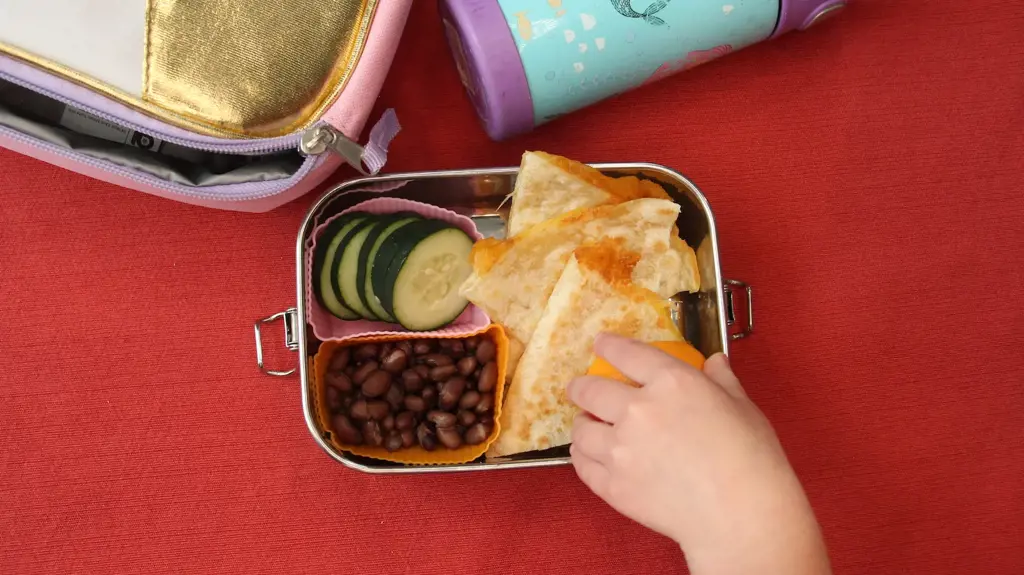
Packing school lunches can be a challenge, especially when you're trying to stick to a budget. However, with a little planning and creativity, it's possible to provide your child with nutritious and delicious meals without breaking the bank. Here are some budget-friendly ideas for packing school lunches that are sure to please both your child and your wallet.
- Plan ahead: Before you head to the grocery store, take some time to plan out your child's lunches for the week. This will help you avoid impulse purchases and ensure that you have all the ingredients you need. Consider involving your child in the planning process so they can have a say in what goes into their lunchbox.
- Make use of leftovers: Leftovers from dinner can make great school lunches. Roasted chicken can be turned into a sandwich, pasta can be served cold with a simple vinaigrette, and cooked vegetables can be included as a side dish. Be creative and think outside the box when repurposing leftovers.
- DIY snacks: Pre-packaged snacks can be expensive, so why not make your own? Granola bars, trail mix, and fruit leather are all easy to make at home and are much more cost-effective than their store-bought counterparts. Plus, you have control over what goes into them, ensuring that your child gets a nutritious snack.
- Buy in bulk: When it comes to staples like bread, cheese, and yogurt, buying in bulk can save you a lot of money in the long run. Look for sales and stock up when items are on special. Just be mindful of the expiration dates and make sure you have enough storage space.
- Shop seasonally: Fruits and vegetables that are in season tend to be cheaper and taste better. Take advantage of the seasonal produce in your area and incorporate it into your child's lunches. Not only will this save you money, but it will also expose your child to a variety of flavors and encourage them to eat more fruits and vegetables.
- Get creative with sandwiches: Sandwiches don't have to be boring. Think beyond the traditional ham and cheese and experiment with different ingredients and flavors. Use leftovers like grilled chicken or roasted vegetables, or try spreads like hummus or pesto instead of mayo. Adding a variety of textures and flavors will keep your child excited about their lunch.
- Invest in reusable containers: Instead of using disposable plastic bags and wraps, invest in reusable containers. Not only will this save you money in the long run, but it's also better for the environment. Look for containers that are durable, leak-proof, and easy to clean.
- Involve your child: Getting your child involved in the lunch-packing process can help them become more interested in their meals and reduce the chances of food waste. Let them choose their own fruits and vegetables at the store, and give them options when it comes to snacks and sandwiches. This way, they'll be more likely to eat what's in their lunchbox.
Remember, packing a school lunch doesn't have to be expensive. With a little planning and creativity, you can provide your child with nutritious meals that won't break the bank. By involving your child in the process and being mindful of your spending, you can ensure that their lunches are both budget-friendly and enjoyable.
Essential Items to Pack for a Caribbean Cruise in February
You may want to see also

Do you have any tips or tricks for creating variety in packed school lunches to prevent boredom?
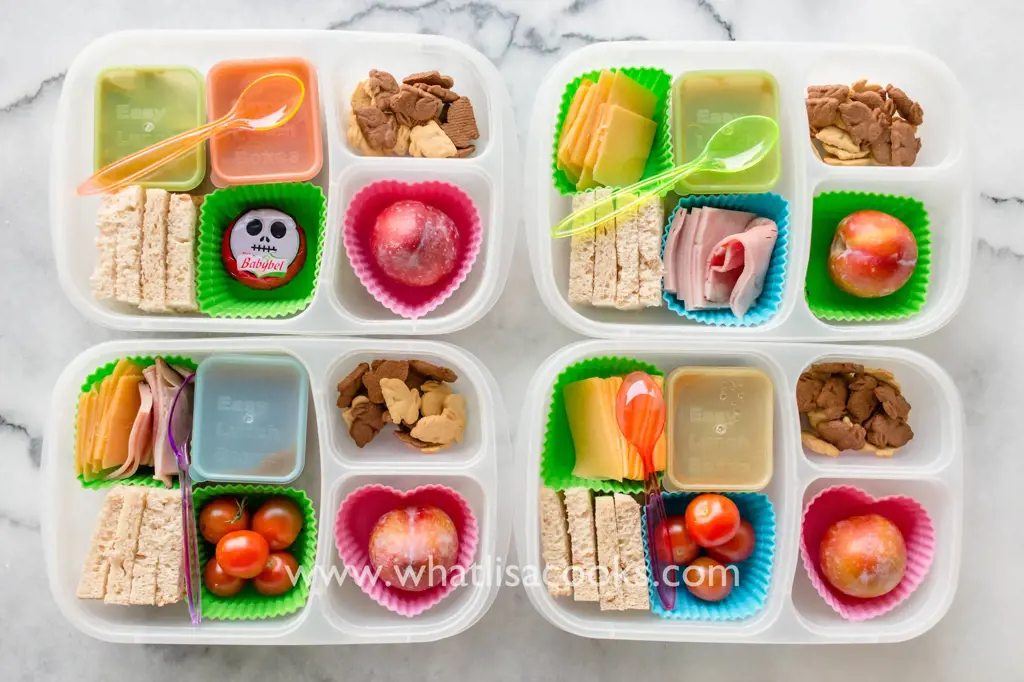
Packing school lunches that are both nutritious and appealing to children can be a challenging task. However, with a little creativity and planning, it is possible to create a variety of lunch options that will keep your child engaged and excited about their meals. Here are some tips and tricks to help you prevent lunchtime boredom:
- Get your child involved: Involve your child in the lunch-planning process. Ask them for their input and suggestions on what they would like to have in their lunchbox. This will not only make them feel more involved but also ensure that they are more likely to eat what you pack.
- Plan a weekly menu: Sit down at the beginning of each week and plan a menu for your child's lunchbox. This will help you avoid repetitive meals and ensure that your child gets a balanced diet throughout the week. Make sure to incorporate a variety of food groups such as fruits, vegetables, whole grains, and proteins.
- Use different ingredients: Introduce variety by using different ingredients in your child's lunches. For example, you could switch between different types of bread, such as whole wheat, multigrain, or wraps. You could also experiment with different types of protein sources, such as chicken, turkey, tofu, or beans.
- Pack a mix of familiar and new foods: While it's important to introduce new foods to your child, it's also important to include some familiar foods that your child enjoys. This will give them a sense of comfort and make them more open to trying new foods. Consider packing a mix of their favorite fruits and vegetables along with a new fruit or vegetable each week.
- Use different textures and flavors: Adding variety to your child's lunchbox can be as simple as incorporating different textures and flavors. For example, you could pack crunchy carrot sticks, smooth hummus, and a few cherry tomatoes for a contrast in textures. You could also experiment with different seasonings and spices to create unique flavor combinations.
- Make it visually appealing: Presentation plays a significant role in making meals more appealing, especially for children. Use different containers, bento boxes, or silicone muffin cups to make the lunchbox visually appealing. Incorporate colorful fruits and vegetables, and use cookie cutters to create fun and interesting shapes.
- Keep it simple: While it's great to create variety, it's also important to keep things simple. Avoid packing lunches with too many different items, as this can overwhelm your child. Aim for a balanced meal with a main dish, a side of fruits or vegetables, and a healthy snack.
Here’s an example of a packed school lunch that incorporates variety:
- A turkey and cheese sandwich on whole wheat bread
- A side of baby carrots and cucumber slices with hummus
- A piece of fruit, such as an apple or an orange
- A yogurt or a small container of nuts for a healthy snack
Remember that it's essential to consider your child's dietary restrictions and preferences when planning their lunches. By incorporating these tips and tricks, you can create a variety of packed school lunches that are both nutritious and exciting for your child.
Nigel Pack: The High School Journey of a Basketball Phenom
You may want to see also
Frequently asked questions
Some healthy options for packing a high school lunch include sandwiches with whole grain bread, lean protein (such as turkey or chicken), and plenty of veggies. Other options could include salads with a variety of greens and toppings, like grilled chicken or tofu, and yogurt with fresh fruit and granola.
To ensure freshness, it's important to pack your high school lunch in an insulated lunch bag or container with an ice pack. This will help maintain a cool temperature and prevent perishable items from spoiling. Additionally, consider packing items like sliced fruits or vegetables in separate containers to prevent them from getting soggy.
When packing a high school lunch, it's best to avoid foods that can easily spoil or become unsafe to eat. This includes items like mayonnaise-based salads or sandwiches that contain raw meats or fish. It's also a good idea to limit or avoid sugary snacks and beverages, as they can lead to energy crashes and affect concentration in class.
To make your high school lunch more exciting, try adding some variety and creativity to your meals. Consider trying new recipes or combinations of ingredients to keep things interesting. You could also include small treats or surprises in your lunch, like a piece of dark chocolate or a handwritten note from a friend or family member.
To pack a high school lunch that is both nutritious and filling, be sure to include a balance of macronutrients - carbohydrates, protein, and healthy fats. This could include items like whole grain bread or pasta, lean protein sources like chicken or beans, and healthy fats from sources like nuts or avocado. Additionally, including plenty of fruits and vegetables will provide fiber to help keep you feeling fuller for longer.







